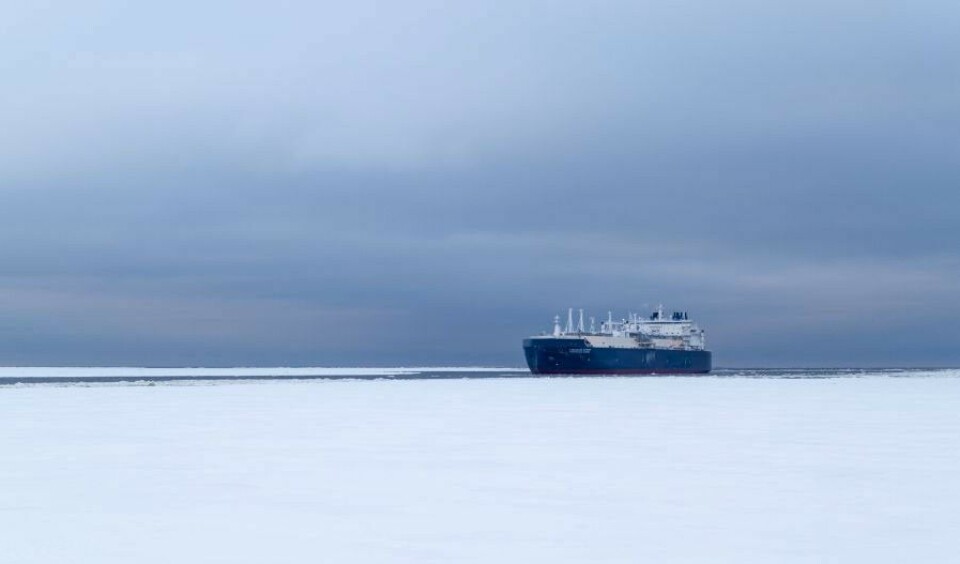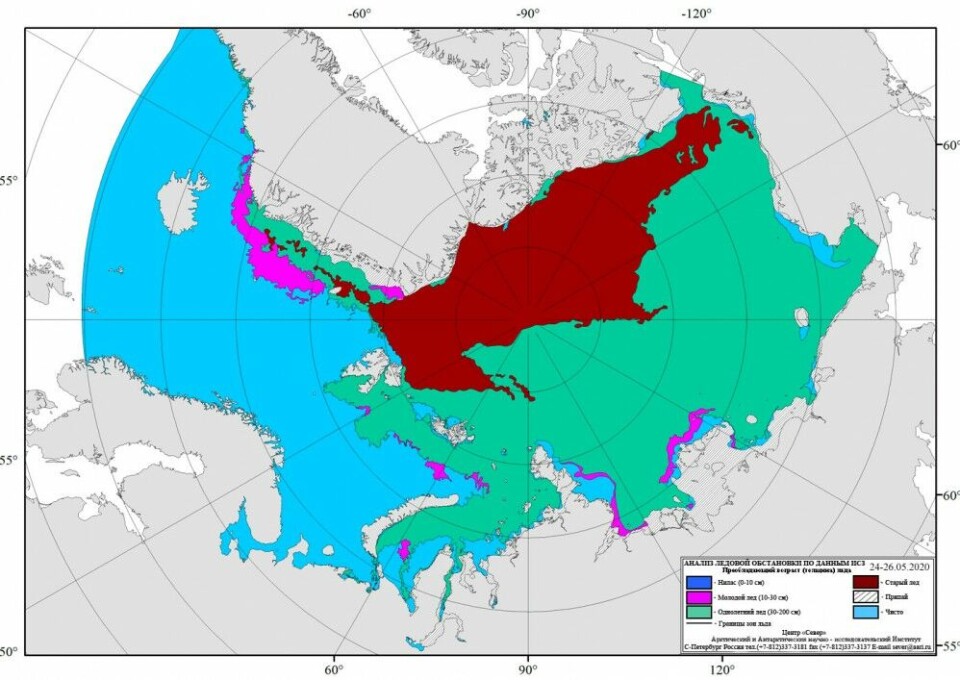
Tanker crosses Russian Arctic route without icebreaker assistance
Commercial shipping on the Northern Sea Route starts earlier than ever before. By late May, a carrier had set out on the icy route without icebreaker escort.
The sea ice along the Russian Arctic coast is quickly vanishing as temperatures in the region have been reaching record highs.
With the retreating ice comes tanker traffic.
It was the “Christophe de Margerie” that on the 19th May kickstarted this year’s shipping season across the eastern part of the Northern Sea Route. The vessel owned and operated by Russian shipping company Sovcomflot loaded up liquefied natural gas in Sabetta and is due to arrive in the Chinese port of Jingtang on the 11th June.
It was the earliest east-bound shipment on the route ever for this kind of vessel.

By 27th May, the ship had made it almost to the island of Wrangle, information from ship tracker service MarineTraffic shows. The “Christophe de Margerie” is accompanied by nuclear powered icebreaker “Yamal”.
In the wake of the almost 300 meter long vessel now follows the “Vladimir Voronin”, a vessel that is operated by company Teekay. The “Vladimir Voronin” on the 25th May left Sabetta and was on May 27th located in the Vilkitsky Strait north of the Taymyr Peninsula.
The ”Vladimir Voronin” is not accompanied by icebreaker. The “50 Let Pobedy” that escorted the ship out of Sabetta and eastwards towards the Vilkitsky Strait has now returned and appears to be on its way back to Sabetta.
Ice maps by the Russian Arctic and Antarctic Research Institute show that there are open waters in the southernmost parts of the Laptev Sea and the East Siberian Sea. There is now only one-year old ice along the whole route contrary to last year when a belt of multi-year old ice covered parts of the East Siberian Sea.

Ice layers on the Northern Sea Route have shrunk dramatically over a number of years and in September 2019 the ice sheet was at its second smallest level ever.
Among the drivers of the sea ice melting are the quickly increasing temperatures.
The year 2019 saw the second highest average temperatures in the Arctic ever, and the latest climate report by Russian meteorological service Roshydromet says that average winter temperatures along the Northern Sea Route, the waters located along the country’s Arctic coast, have increased by about 5 degrees since the 1990s.
The “Christophe de Margerie” and “Vladimir Voronin” are part of a fleet of 15 vessels that serve the Yamal LNG project. They all have ice class Arc7 and can autonomously break through up to 2,1 meters of sea ice.
The fleet of LNG carriers are instrumental in the major spike in shipping in the Russian Arctic. In 2019, a total of 31,5 million tons of goods were shipped on the Northern Sea Route, an increase of almost 60 percent from the previous year.
This article has been updated. It originally reported about three LNG tankers on their way across the NSR. It turned out that there are only two vessels
















